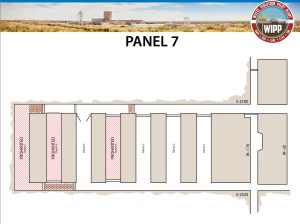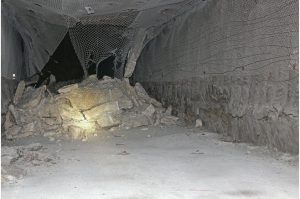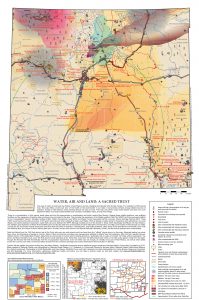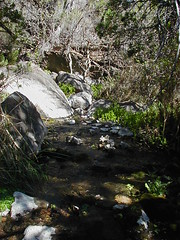Impending Roof Collapse at WIPP Endangers Workers
![]() The Department of Energy (DOE) expects that a massive roof fall will occur at Waste Isolation Pilot Plant (WIPP) within the next couple of weeks. The collapse of the ceiling in Panel 7, Room 6 is within 200 feet of where workers are emplacing plutonium contaminated radioactive and hazardous waste. http://www.wipp.energy.gov/wipprecovery/Presentations/Town_Hall_Slides_09_28_17.pdf, slide 11. Nevertheless, DOE has not publicly committed to keeping workers out of the area when the ceiling falls.
The Department of Energy (DOE) expects that a massive roof fall will occur at Waste Isolation Pilot Plant (WIPP) within the next couple of weeks. The collapse of the ceiling in Panel 7, Room 6 is within 200 feet of where workers are emplacing plutonium contaminated radioactive and hazardous waste. http://www.wipp.energy.gov/wipprecovery/Presentations/Town_Hall_Slides_09_28_17.pdf, slide 11. Nevertheless, DOE has not publicly committed to keeping workers out of the area when the ceiling falls.
In February 2014, a radiation release in the adjacent Panel 7, Room 7 contaminated a large portion of the underground salt mine, including all seven rooms in Panel 7. Since then, workers in that area must wear personal protective equipment and respirators to prevent radiation exposure. DOE officials state that equipment also can protect workers from possible increased exposures caused by the release of toxic and radioactive materials when the ceiling collapses.
On November 3, 2016, a significant portion of the ceiling in Panel 7, Room 4 collapsed, causing workers to be evacuated from the underground. http://www.wipp.energy.gov/Special/WIPP%20Update%2011_4_16.pdf In a report released on December 1, 2016, the Mining Safety and Health Administration (MSHA) wrote that underground workers had expressed significant concerns about the safety of Panel 7 a week before the ceiling fall occurred. http://www.wipp.energy.gov/Special/MSHA_Technical_Support_Evaluation.pdf
MSHA has prohibited entry into Room 6 since September 13, 2016, because of dangerous conditions in the room. On December 22, 2016, DOE informed the New Mexico Environment Department that Room 6 has six pieces of radioactively contaminated equipment that contain an estimated 581 gallons of hydraulic fluid, engine oil, brake fluid, coolant, and battery acid. DOE also stated, “the risks to workers associated with entering Room 6 to drain fluids and remove batteries far outweigh the risk associated with abandoning the equipment in its present state.” http://www.wipp.energy.gov/library/Information_Repository_A/Follow-up_Reports/16-3341_Redacted.pdf
On January 13, 2017, the Department concurred to leave the contaminated equipment in place. On January 31, 2017, DOE sent the Department a nine-page analysis of the Panel 7, Room 6 roof collapse possibly causing a fire of the combustible liquids and batteries. The analysis concluded that while the roof fall would occur, a fire is “extremely unlikely,” and that waste being emplaced nearby would not be affected. http://www.wipp.energy.gov/library/Information_Repository_A/Follow-up_Reports/17-1006_Nuclear_Safety_Hazard_Evaluation.pdf
Don Hancock, of Southwest Research and Information Center, said, “There is no reason that workers should be in Panel 7 when the ceiling collapses in Room 6. The collapse could cause a fire or release additional radioactivity from the floors and walls where waste is being emplaced. Quickly evacuating workers when the collapse occurs could result in injuries. If safety is the number one priority, DOE should prohibit workers from being in Panel 7 until the effects of the roof fall can be fully examined.” http://www.sric.org/
Tags: 581 gallons, battery acid, brake fluid, coolant, Department of Energy, DOE, endangers workers, engine oil, evacuation of workers, fire combustible liquids and batteries, hydraulic fluid, impending roof collapse, Mining Safety and Health Administration, MSHA, Panel 7 - Room 4, Panel 7 - Room 6, Panel 7 - Room 7, personal protective equipment, pool fire, respirators, risk, Waste Isolation Pilot Plant, WIPP
















Comments
No comments so far.